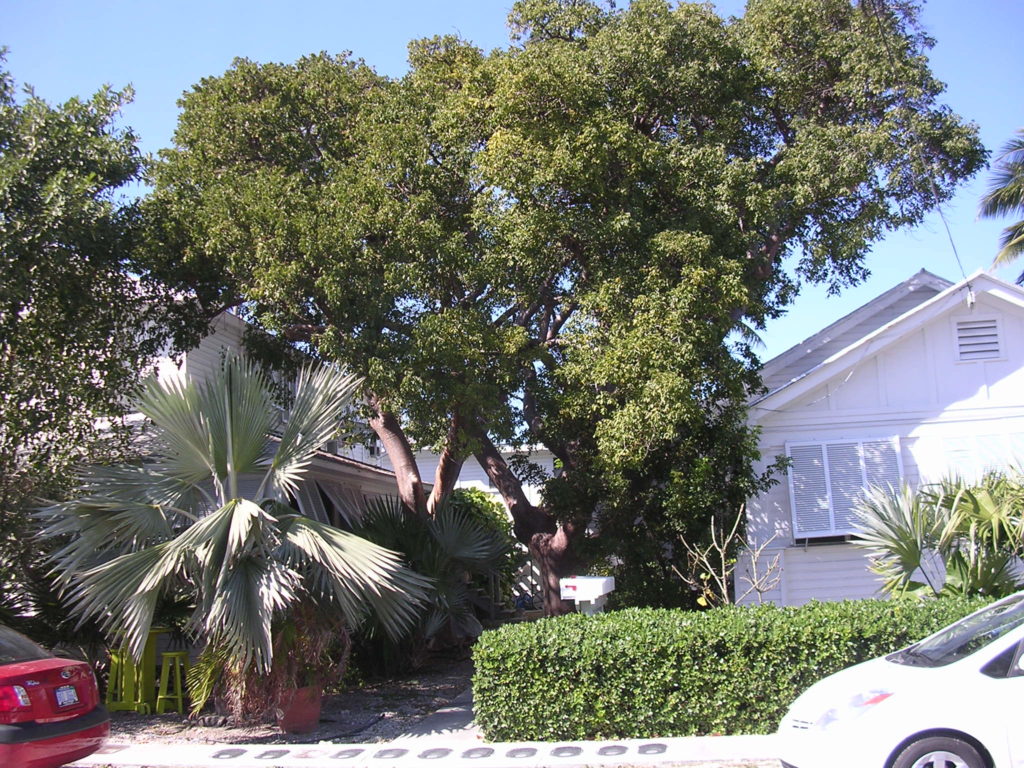
Gumbo Limbo
Bursera simaruba
Gumbo Limbo is a fast growing tree up to 60 feet tall. The red or green peeling bark is attractive and mixes well with Simpson Stopper, Pigeon Plum and Soldierwood that also have peeling bark.
Gumbo Limbo is native from the Keys, following the coastline, to Brevard Co. It likes average to dry soil and is tolerant of salt air, yet not inundation by salt water for long periods.
The red covered seeds are eaten by the great crested flycatcher in the spring and the leaves are a food source for the larva of the Dingy Purplewing butterfly which occurs in the Keys. The sticky sap was once used as “Bird Lime” or glue to catch small birds by ancient peoples. The wood was also used for the animals on merry go rounds.
For a coastal hardwood hammock theme, this is one of the best trees to start with. Buy plants grown from seedlings, which have better growth structure than rooted branches and survive hurricanes better.
This is because seedlings naturally grow upward and bend over in an arc. Branches then form on the opposite side of the arc to fill out the tree. During a hurricane, the top branches are sheared leaving little for the wind to catch and saving the tree trunk which soon grows new branches.
Mix with an understory of Wild Coffee, Firebush, Coontie, Wild Plumbago, Jamaica Caper and Marlberry. Build the canopy with other hammock trees including Pigeon Plum, Mastic, Paradise Tree, Wild Tamarind, Jamaica Dogwood, Red Bay, Live Oak, Soldierwood, Bahama Strongbark and Blolly.
The Spiraling Whitefly was a new problem on this and other plants recently. It did not kill these trees and it even provided food for migrating warblers. An insect that preys on this pest has been introduced and has killed most of these insects leaving the trees clean and green again.